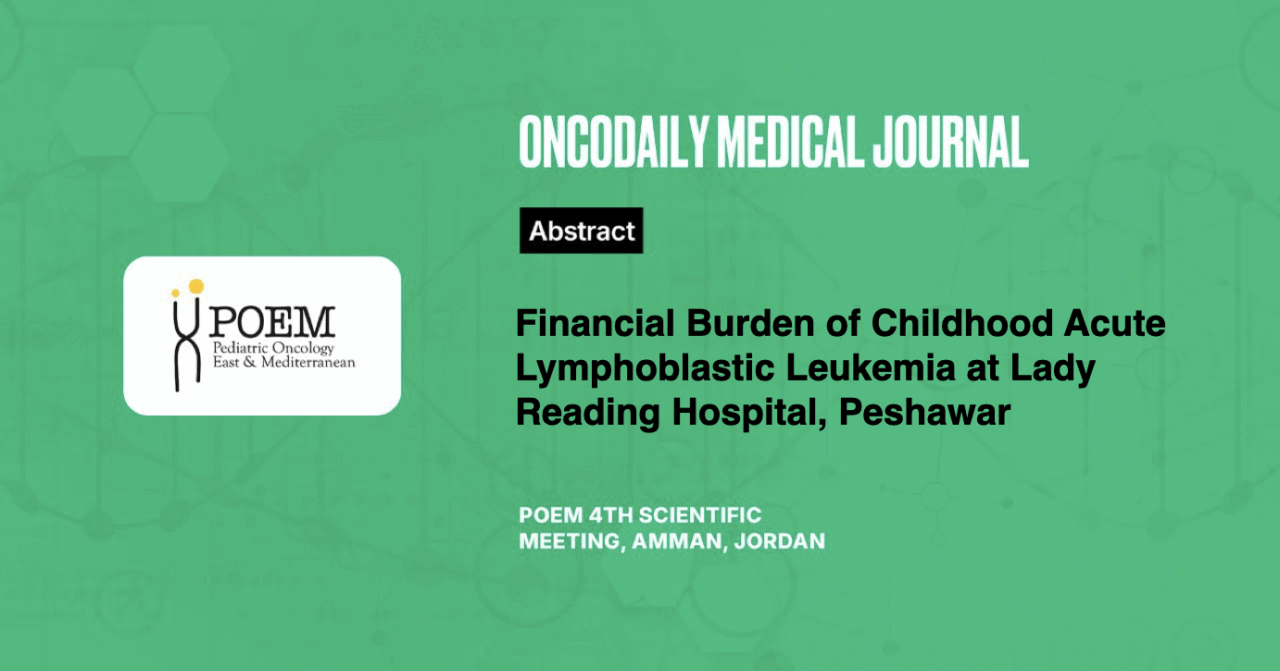Financial Burden of Childhood Acute Lymphoblastic Leukemia at Lady Reading Hospital, Peshawar
Abstract
Introduction: Acute lymphoblastic leukemia (ALL) is the most common childhood cancer in Pakistan, requiring intensive treatment over two years. Lady Reading Hospital (LRH), a pediatric oncology center, serves children from Khyber Pakhtunkhwa and Afghanistan, where financial challenges limit access to care. While LRH provides free intravenous fluids and antibiotics, families bear most treatment costs. Many borrow money or sell assets, leading to financial and emotional distress. This study evaluates the direct and indirect costs of ALL treatment in the first year.
Methodology: A cost analysis was conducted on 46 families of children receiving ALL treatment at LRH. Direct costs included chemotherapy, hospital stays, diagnostics, procedures, and medications. Indirect costs included transportation, accommodation, lost income, and caregiving. Descriptive statistics were used for cost analysis.
Results: ALL treatment imposes a heavy financial burden, often exceeding annual household income. The average first-year treatment cost per child was PKR 835,000 (USD 2,900). Direct costs were PKR 568,000 (USD 1,970, 68%), with chemotherapy as the largest expense at PKR 375,000 (USD 1,300, 45%). Indirect costs totaled PKR 267,000 (USD 930, 32%), including transportation (PKR 70,000–90,000, USD 245–315, 10%), food and lodging (PKR 60,000–80,000, USD 210–280, 9%), and lost wages (PKR 110,000–130,000, USD 385–455, 15%). Afghan families (28%) faced additional hardships due to travel restrictions, increasing financial strain. Many exhausted savings, took on debt, or sold possessions to continue treatment.
Conclusion: The cost of childhood ALL treatment at LRH places families under severe financial strain. While some medicines are free, most treatment expenses remain unaffordable, especially chemotherapy, hospital stays, and indirect costs. Afghan families face added hardship due to travel restrictions. These findings highlight the urgent need for financial aid, subsidized treatment, and cross-border healthcare collaboration to ensure equitable care.





